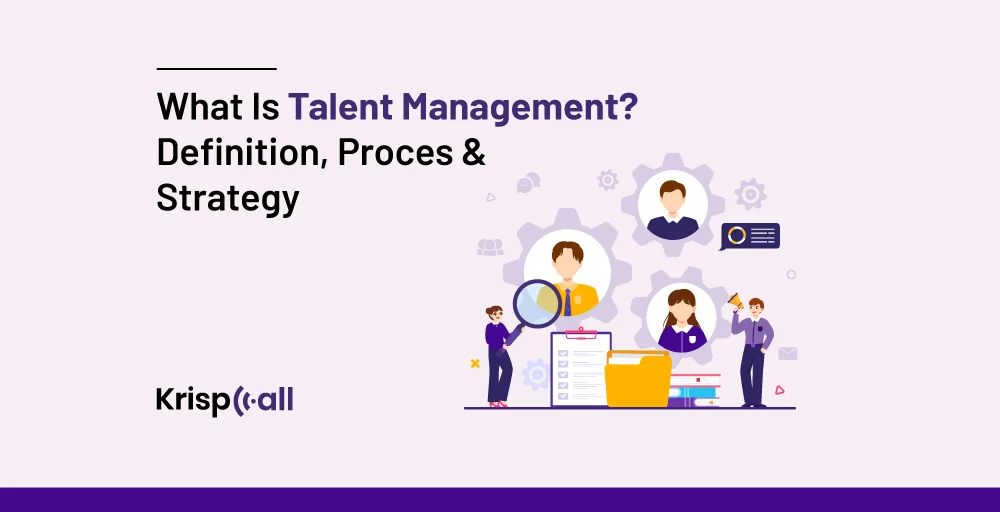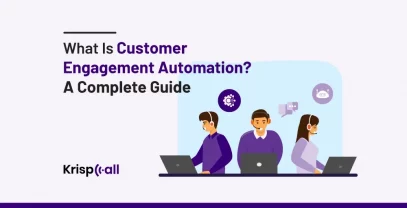As organizations strive to stay ahead of the curve, a critical component of their success lies in their ability to attract, develop, and retain the best and brightest employees. The hunt for acquiring and managing top talent has never been more intense than in today’s fast-paced and competitive business landscape.
This is where talent management comes into play. It is a vital function that can make the difference between mediocrity and excellence. But what exactly is talent management, and why is it essential for businesses of all sizes to get it right?
In this article, we’ll delve into the definition, processes, benefits, and strategies of talent management, providing a comprehensive guide to help you master this critical business function and unlock the full potential of your workforce.
🔑 KEY HIGHLIGHTS
- Talent management is a systematic process designed to attract, develop, motivate, and retain employees to optimize their performance and contribute to the organization’s success.
- Talent management includes a set of HR processes and strategies for attracting, developing, motivating, and retaining high-performing employees.
- Effective talent management ensures companies attract, recruit, onboard, develop, challenge, and compensate top internal and external performers to drive business success.
- The talent management process involves identifying vacant positions, hiring suitable candidates, developing their skills to match the position, and successfully retaining them to achieve long-term organizational goals.
What Is Talent Management?

Talent management is a systematic process designed to attract, develop, motivate, and retain employees to optimize their performance and contribute to the organization’s success. It encompasses various activities to maximize employee potential and align their goals with the company’s strategic objectives. It’s about bringing the right people on board and empowering them to drive business growth and achievement.
The talent management process encompasses several critical steps, such as identifying talent gaps and vacant positions, recruiting and onboarding top candidates, cultivating their growth and development within the organization, and providing future-focused training to build expertise.
This comprehensive approach also involves engaging, retaining, and motivating employees to drive long-term business success. If done right, talent management demonstrates its far-reaching impact on all aspects of human resources, ultimately ensuring the organization achieves its goals.
What Does Talent Management Include?
Talent management includes a set of HR processes and strategies to attract, develop, motivate, and retain high-performing employees. It encompasses key focus areas such as recruitment and selection, learning and development, performance management, employee experience tailoring, rewards, and optimizing workforce planning and strategy.
The ultimate goal of talent management is to improve performance by creating a system that motivates and engages employees to perform to the best of their abilities.
Talent management includes several key components for optimizing the workforce and achieving business goals. These components can be categorized into several main areas, which are:
- Talent Acquisition: Recruiting and onboarding the right people with the necessary skills and potential to contribute to the organization’s success. This includes creating detailed job descriptions, using effective sourcing and screening methods, and providing a positive onboarding experience.
- Performance Management: Regularly evaluate employee performance, provide feedback, and align individual goals with organizational objectives. This helps identify high-potential employees and areas for development.
- Learning and Development: Offering training, mentoring, and other learning opportunities to help employees enhance their skills and prepare for future roles. This supports career growth and succession planning.
- Employee Engagement and Retention: Implementing strategies to keep employees motivated, satisfied, and committed to the organization. This can include competitive compensation, recognition programs, and fostering a positive work culture.
- Succession Planning: Identifying and developing internal talent to fill critical leadership and specialized roles in the future. This ensures business continuity and the availability of a strong talent pipeline.
- Workforce Planning: Analyzing current and future talent needs to ensure the right people are in the right roles at the right time. This involves forecasting staffing requirements and skills gaps.
Benefits of Talent Management

Effective talent management ensures companies attract, recruit, onboard, develop, challenge, and compensate top internal and external performers to drive business success. By leveraging talent management software, organizations can gather valuable insights to improve their strategies and reinforce what makes employees feel valued and engaged.
Many studies have revealed that there is a strong correlation between robust talent management and superior organizational performance. Companies with effective talent management are more likely to outperform their competitors, and publicly traded companies with a proven talent management initiative tend to deliver higher shareholder returns.
The key benefits of talent management for companies are:
- Find the best candidates: With talent management, you can streamline your recruiting process and find the best people for the job.
- Create a more diverse and inclusive workplace: By prioritizing diversity, equity, and inclusion, you can create a workplace where everyone feels valued and heard. This leads to more creativity, learning, and a sense of belonging.
- Keep your employees happy and engaged: When you provide a great onboarding experience and growth opportunities, your employees are more likely to be engaged and motivated. This leads to better business performance.
- Reduce turnover and save money: With talent management, you can track why employees leave and make changes to reduce turnover. This saves you time and money in the long run.
- Plan for the future: By identifying and developing future leaders, you can ensure that your organization is prepared for the future and minimize the risks associated with senior role vacancies.
Talent Management Process
The talent management process involves identifying vacant positions, hiring suitable candidates, developing their skills to match the position, and retaining them successfully to achieve long-term organizational goals. It’s a strategic approach to attract, develop, and retain a highly productive workforce committed to the organization for an extended period.
The process usually includes the following steps:
- Planning: Identifying human resource requirements, selecting the skills expected from the ideal candidate, developing a job description, and proposing a complete workforce plan for recruitment.
- Attracting talent: Deciding whether to fill the vacant position internally or externally and searching for new candidates to initiate the onboarding process.
- Selecting: Reviewing resumes, conducting written tests and face-to-face interviews, and negotiating salary and benefits with the final shortlisted candidate.
- Developing: Developing the selected candidate’s skills according to the job responsibility, starting with an onboarding program and internal skill training to enhance proficiency.
- Retaining: Focusing on employee retention strategies, including rewards, increments, promotions, and providing growth opportunities to employees.
- Transitioning: Conduct exit interviews and decide who will replace the employee leaving.
An effective talent management process can improve productivity by making more competent hires, streamlining company operations, and leveraging technological tools like application tracking and human resource management systems.
Talent Management Models
There are several talent management models that organizations can adopt to manage their workforce effectively. Here are a few:
- The 5-Box Model: Imagine a team where everyone is rocking their roles. This model helps you identify the superstars (Box 1), those crushing it, and those needing a little extra support (Box 5). You can create a dream team that drives results by focusing on developing and retaining your top performers.
- The 9-Box Model: Take the 5-Box Model to the next level with this more detailed approach. The 9-Box Model helps you pinpoint exactly where each team member stands regarding performance and potential. With this insight, you can create a tailored plan to fill talent gaps and bring out the best in everyone.
- The Talent Pipeline Model: Think of your organization as a pipeline of talented individuals waiting to shine. This model shows you how to identify, develop, and retain top performers so they can step into key roles when the opportunity arises. It’s all about building a strong bench of future leaders.
- The Career Development Model: This model can help your team members grow and thrive. By creating a personalized career development plan, providing training and development opportunities, and pairing them with mentors, you can empower them to reach their full potential and take on new challenges.
- The Competency-Based Model: What makes a Rockstar employee? This model helps you identify the essential skills and abilities required for each role and develops your team members to meet those standards. By focusing on building competencies, you can create a team that’s equipped to tackle any challenge that comes their way.
These are just a few examples of talent management models organizations can adopt. The key is to choose a model that aligns with the organization’s goals and objectives and tailor it to meet its specific needs.
Talent Management Strategy and Best Practices
To build a successful organization, you need a solid talent management strategy. Here are the best practices and strategies to help you attract, develop, and retain top talent:
- Promote Your Brand: Invest in your corporate image and showcase what makes your company unique to attract top talent. Highlight your company culture, values, and employee benefits to stand out in the job market.
- Adopt a Holistic Approach: Strategic talent management involves a comprehensive approach to managing your workforce, focusing on attracting, developing, and retaining top performers to achieve your business goals.
- Define Your Talent Strategy: A well-defined talent strategy aligns people, processes, and technology with your business needs. Successful organizations understand that talent is the lifeblood of every organization and must be managed effectively to achieve their business goals.
- Choose Your Talent Management Approach: Choose the approach that fits your organization’s needs and goals. Strategic talent management focuses on creating a vision for the organization’s future, tactical talent management involves implementing practices to achieve organizational objectives, and operational talent management focuses on improving existing processes and systems.
- Create a Positive Work Environment: Foster a culture of collaboration, productivity, and employee satisfaction to ensure long-term success. A positive work atmosphere, respect, acknowledgment, and a healthy workspace are essential for attracting and retaining top talent.
- Customize Benefit Packages: Customized benefit packages are a crucial strategy for attracting and retaining top talent in today’s competitive job market. Offer customized plans to fit the specific needs of your employees and show that you value their contributions.
- Strive for a Positive Work Environment: Invest in your workforce and create a positive work environment to ensure employee well-being and success. Happy, engaged, and successful employees are more loyal, focused, and productive.
- Implement a Robust Onboarding Program: A strong onboarding program ensures a smooth transition for new employees, reducing turnover and increasing productivity. A well-designed onboarding program helps new employees settle into their roles quickly, builds relationships, and sets expectations for success.
By following these best practices and strategies, organizations can attract, engage, and retain the right talent, ensuring long-term success and competitiveness in the market.
Conclusion
Talent management is critical to any organization’s success. It enables companies to attract, develop, and retain top performers who can drive business results. Organizations that understand talent management’s definition, process, and strategy can create a competitive advantage in the marketplace.
Effective talent management involves various activities, from identifying and acquiring talent to developing and engaging employees and retaining and succession planning. Organizations can improve employee productivity, increase job satisfaction, and reduce turnover rates by implementing a comprehensive talent management strategy.
FAQs
What is the Difference Between HR and Talent Management?
The difference between HR and Talent Management lies in their focus areas. HR manages employees and ensures that the organization complies with employment laws and regulations. Talent Management, on the other hand, is a subset of HR that focuses on developing employees by mapping out career paths and training programs.
What is the Difference Between Talent Management and Talent Acquisition?
Talent acquisition is about attracting and hiring the right people for the job. Meanwhile, talent management develops and retains those employees to achieve long-term business goals.
What is the Scope of Talent Management?
The scope of talent management includes identifying talent gaps, sourcing and onboarding suitable candidates and developing and supporting staff. It also includes cultivating and teaching required skills to new employees, providing them with expertise in the managerial and future business outlook.
What is a Talent Management System?
A talent management system handles the entire employee life cycle, including onboarding, recruitment, development, compensation management, and other relevant processes. It’s a comprehensive platform that helps companies attract, retain, and develop their employees, ensuring they have the right people with the right skills and roles.
What is a Talent Management Framework?
A talent management framework is a set of guidelines and best practices organizations can use to manage talent effectively. It also includes defining the organization’s talent strategy, identifying key talent, developing and retaining talent, and measuring the effectiveness of the Talent Management process.





